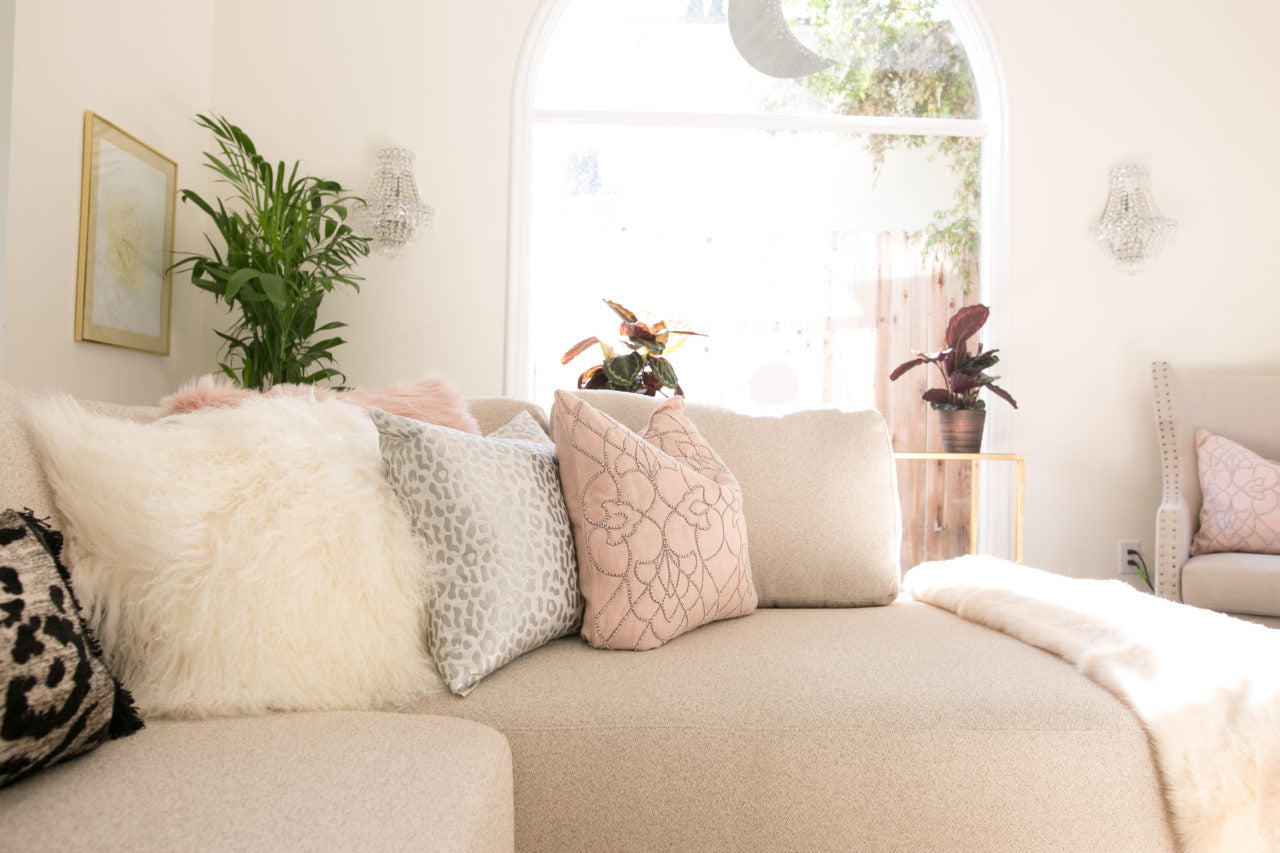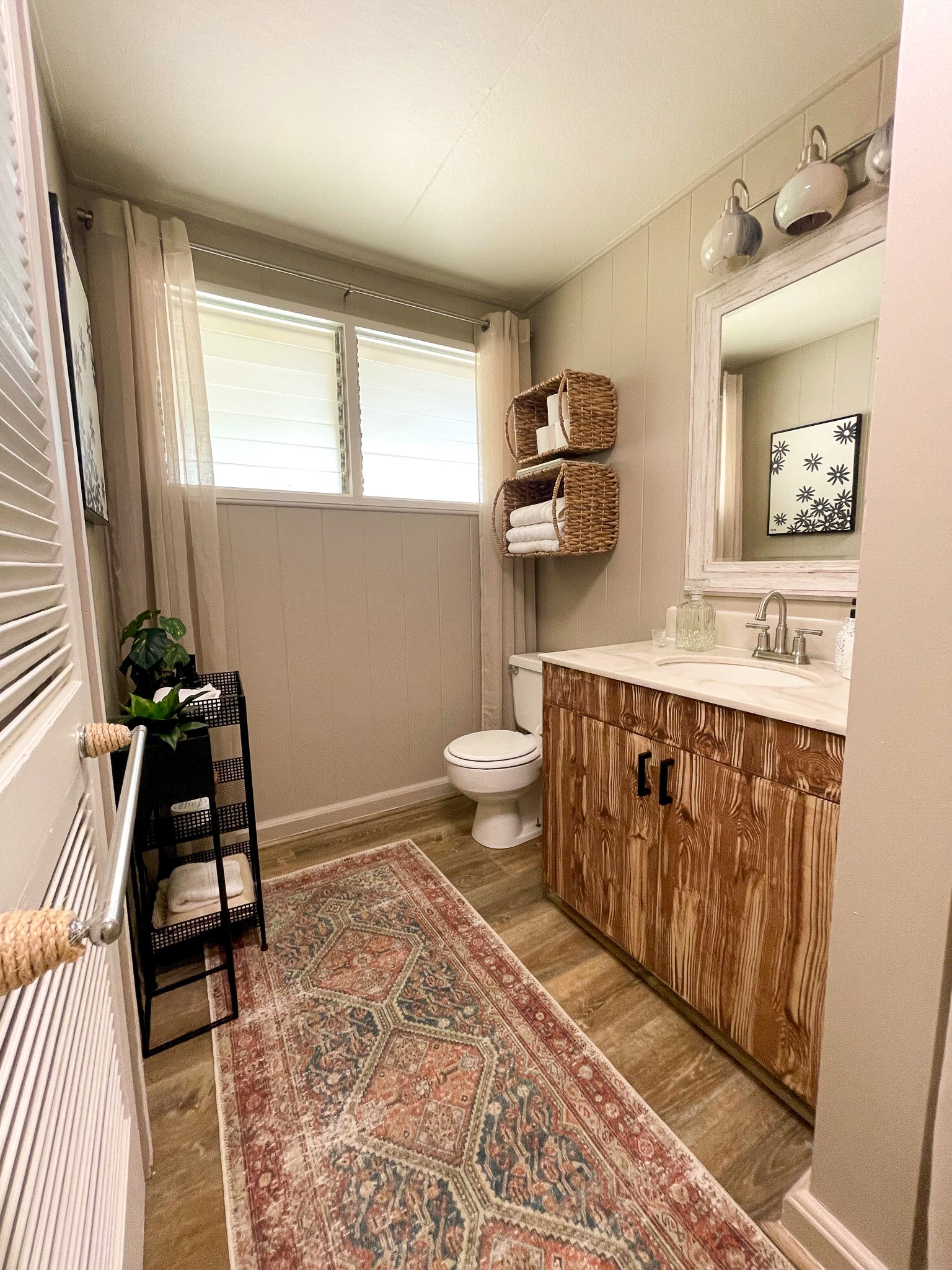One of the most frequently asked questions I receive is how my interior design career came to be. My tale, told above, vlog style, starts from my upbringing and weaves around set design and a penchant for DIY-ing before dropping me off at destination designer.
Along the way, however, I picked up lots of tips for amateurs, aspiring professionals, or even just the creative soul who would like to pick up interior decor as a freelance gig. While these tips focus more on the business and practical side of the profession (and less on how to place lamps, etc.), they can still be helpful for those just looking for a little direction on how to tackle their new room design!
Watch the vlog above for all the details, and check out some pics and tips from my experiences below!
For more about how I grew my career, check out my Draw My Life video and my book, A Hot Glue Gun Mess!
How I Became an Interior Designer
Childhood Influences
My mom and grandmother were both DIY and home decor queens, so I grew up learning how to make DIY projects and to not be intimidated by the scale of things! When my mom hired an interior designer for our home, I learned that people could make a career out of designing and decorating (which paid off in the long run!)

Me and my mom when I was 8!
Us now, when she came to visit and helped us with our garden in OMG We Bought A House!
I went to school!
After going to school for film, I acted for a while (check out my IMDB page here!), but ended up launching Mr. Kate to experiment with and express my passion for DIY projects.
Getting featured on the Nate Berkus Show
My college lessons in set design seriously paid off when I landed a spot on the Nate Berkus show (as seen below!), and was able to share my DIY projects and design instincts with a large audience.
Me and Nate Berkus!
A DIY Coffee Table I made on the show!
Designing on Home Made Simple
From my stint on the Nate Berkus show, I became and on- and off-camera designer and decorator for the show Home Made Simple on the Oprah Network! This gave me a lot more experience and visibility with my designs — which you can see below!
A family room I made over for Home Made Simple!
A bedroom I designed from Home Made Simple!
Designing for friends
After Home Made Simple, a lot of people (friends, friends of friends) were asking me to help them with their places, so I did! Since I was now taking clients like an actual interior designer, I started charging for my time and made these room transformations into more of a business (read on below for more advice on charging for your time!)
More school!
I wanted to learn more about Interior Design, since I had begun a profession in it, so I enrolled in an extension course at UCLA to get a more historical and technical education. Because of the busyness of running the Mr. Kate business, I wasn't able to finish the 2 year program to get my certificate, but I'm still out here as a mostly self-taught interior designer! There is more than one way to make this career happen! Speaking of ...
How You Can Become An Interior Designer
1. Go to school!
Whether you get a certificate or not, any education you can get about interior design or related fields — history, art history, etc. — can only help you! Becoming a sponge and studying these things in college, or teaching yourself if you don't go to college, will give you the base knowledge from which you can build your interior design skills!
2. Visualize with Moodboards
As you know from my design vlogs, moodboards are essential to helping me channel inspiration and manifest it into a designed room! They are also amazing when working with clients, because you can find the common denominators between inspiration images they pull to help you find a direction for their space. I use and recommend Photoshop for this process! Pinterest is a great place to collect design inspiration images.
My moodboard for Lilly Singh (AKA IISuperwomanII)'s bedroom. Watch more of my inspiration and shopping process for her room here!
The shopping board (a collage of items I have purchased, which helps visualize the room in reality) I made for Lilly's bedroom.
3. Measure and Create Floor Plans
Like moodboards, floor plans are essential when prepping for and planning a space! Even if math isn't your strong suit, having the proportions and spaces correct to figure out your layout is so helpful! You don't want to buy everything to then find out there is only 1 foot of room around the bed in any direction.
Below is the floor plan I made for Lilly's bedroom! Sites like SmartDraw are great assets for creating your own floor plan.
Lilly's completed bedroom, as can be seen on OMG We're Coming Over!
Another great asset for interior designers and decorators is IKEA's floor home planner, which is free! We used their planning systems when designing this custom makeup closet for Patrick Starrr!
4. Get your Hands Dirty Decorating
So you've gotten your education, you've made your moodboards and your floor plans ... now what? Well now you have to actually go out there and make some designs happen! Concepts are very important to interior design, but it can't substitute buying and placing items and seeing your designs come to life!
5. Know your worth!
Taking on some design clients for free is a great way to build up experience and a portfolio, but know when it is time to start charging for your services! There are a few main ways to charge: Hourly (set an hourly rate and count how much time you're putting in), a flat fee (paid either at the beginning or end of the design!), or by commission (when you have a resale license, buy furniture at wholesale prices, and make money selling that item to the client.)
6. How to Spend Other People's Money
In order to estimate how much a room is going to cost, I like to create a spreadsheet with every imaginable expense (down to electricians and extra help needed to install) and ballpark numbers of how much each thing will cost. This gives me an initial number to tell the client, though the reality of the design is often more expensive because little things add up! If the person is hesitant about the number, remind them of how much they would be paying over time, or to go spend a few nights in a hotel! Your home should be worth just as much, even if it can be daunting to spend all at once.

7. Believe in Your Talent!
Once you've done all the prep work and gathered some experience, all that's left to do is trust your instincts and design! People are hiring you for your own unique vision, so don't doubt your creativity — make bold decisions and make magic happen! There is no right way to design, so you're way is more than alright — it's great!
The living room/ office designed for Manny MUA on OMG We're Coming Over!
AndreasChoice's new hotel-chic bedroom! When I said to consider your space as you would a hotel, sometimes that means literally!

Our kitchen, as seen on OMG We Bought A House!
















